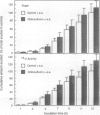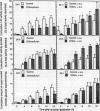Abstract
Treatment of field pennycress (Thlaspi arvense L.) leaves with the herbicide chlorsulfuron resulted in a decrease in the export of assimilate. Twelve hours after a spot application of 1 microgram, assimilate translocation was 70% of that in control leaves. In excised leaves treated with chlorsulfuron the total amounts of sugars and free amino acids were 150 and 170%, respectively, of the amounts in control leaves, 30 hours after herbicide treatment. The amount of sucrose was 247% of that in control leaves. The increase in the concentration of sucrose in the chlorsulfuron-treated leaves, combined with the absence of an effect of chlorsulfuron on carbon dioxide fixation, suggests that the decrease in assimilate transport is not due to an effect on the synthesis of assimilates, but rather to an effect on their movement out of the leaves. Supplying branched-chain amino acids to the field pennycress seedlings prior to the application of chlorsulfuron prevented the occurrence of the effects described.
Full text
PDF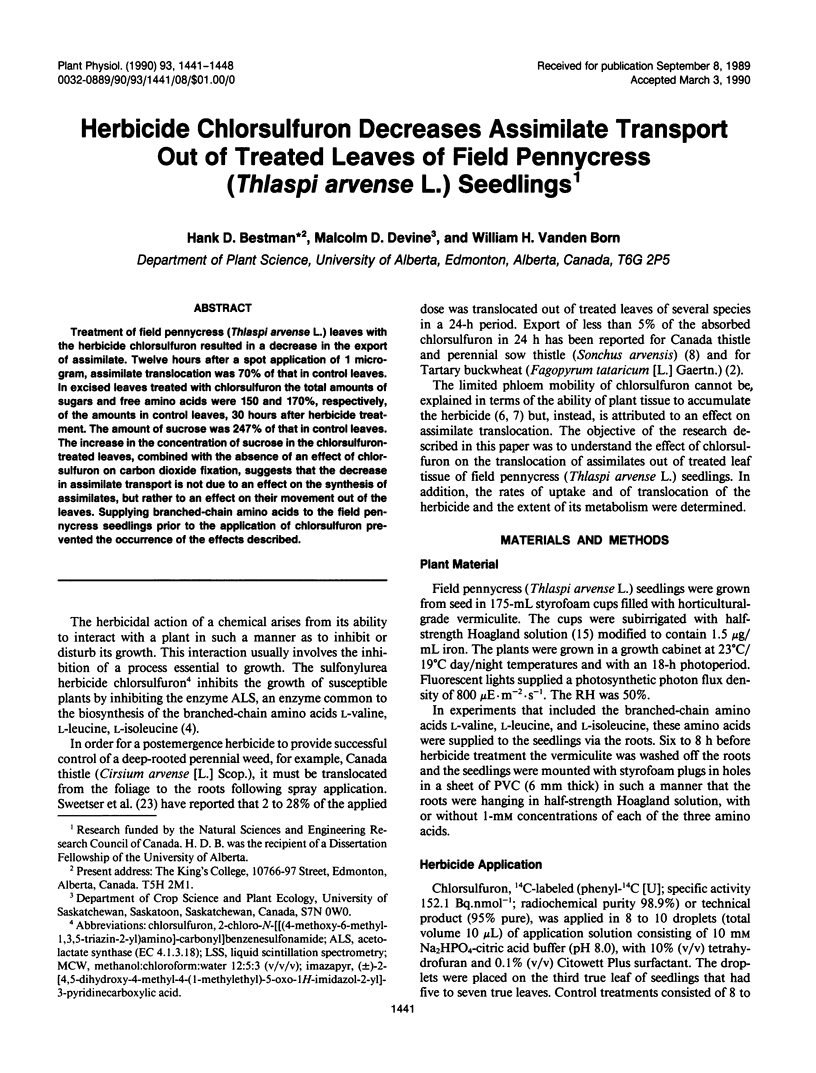
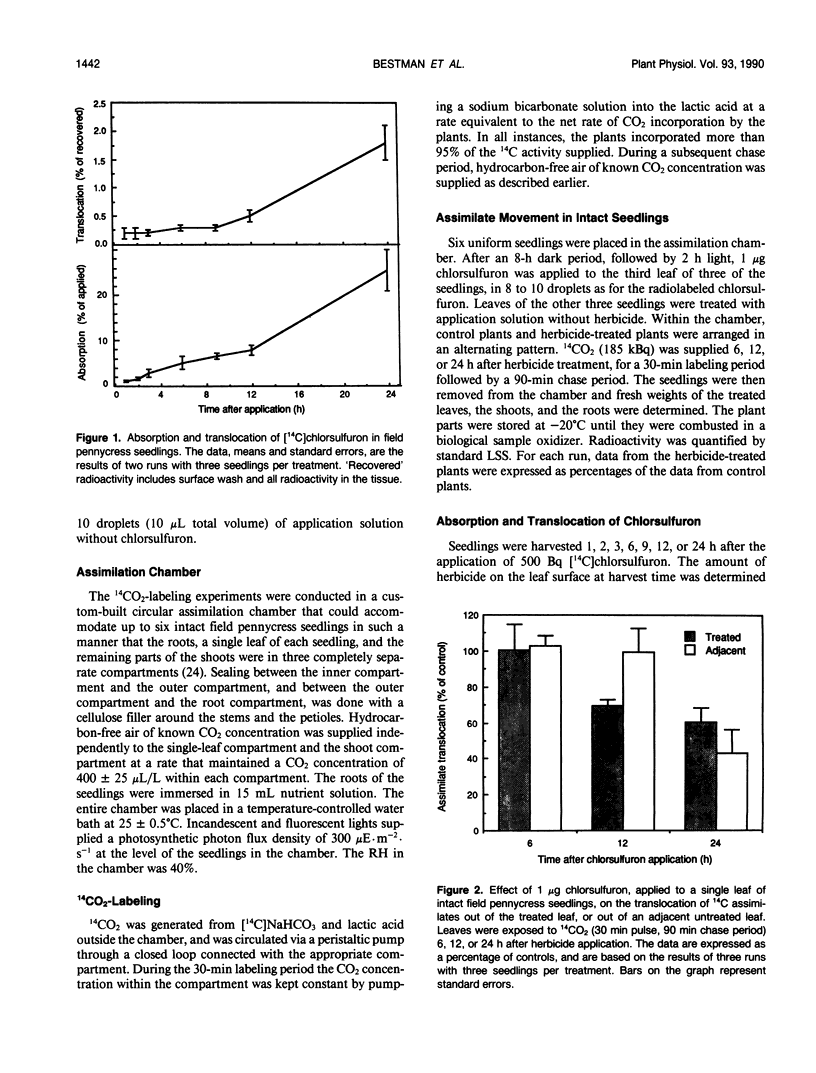
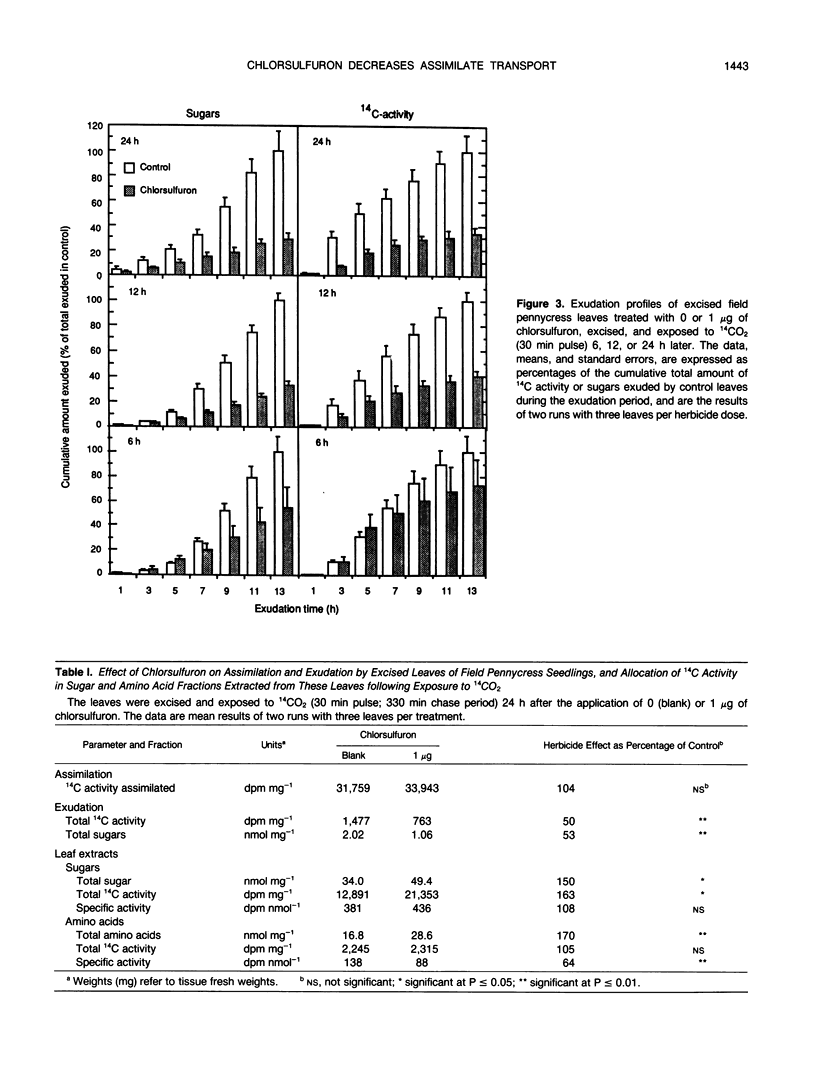
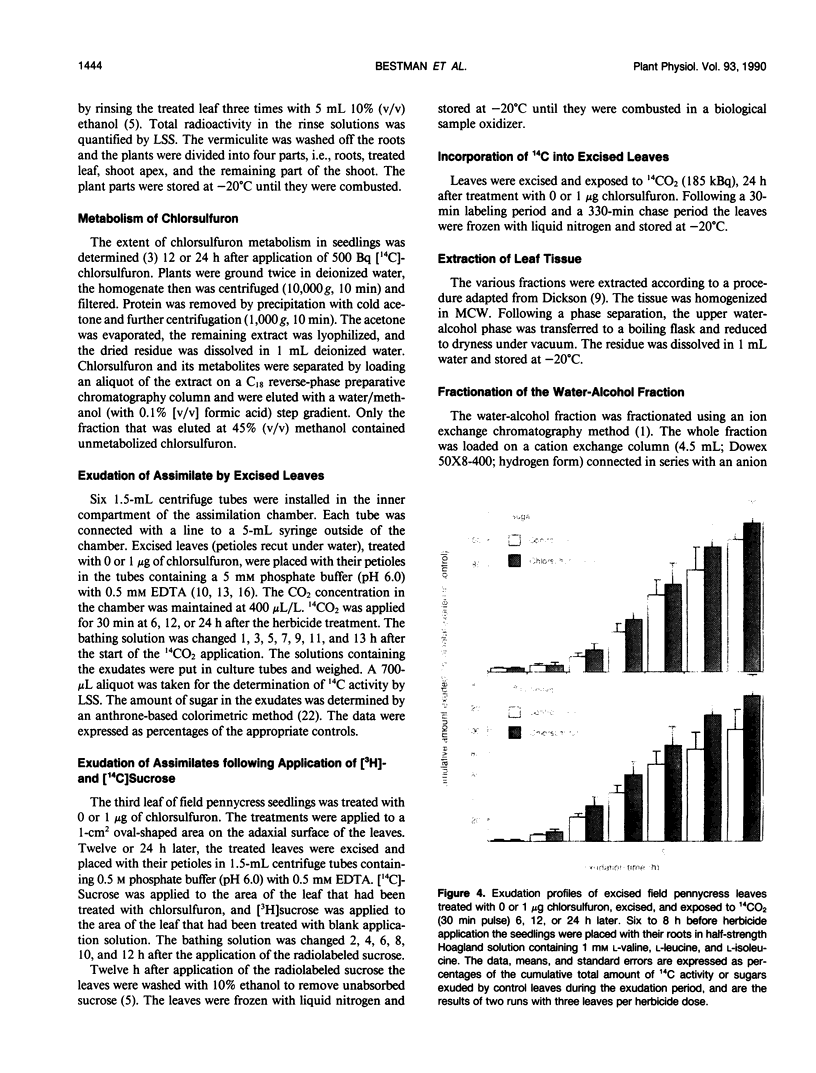
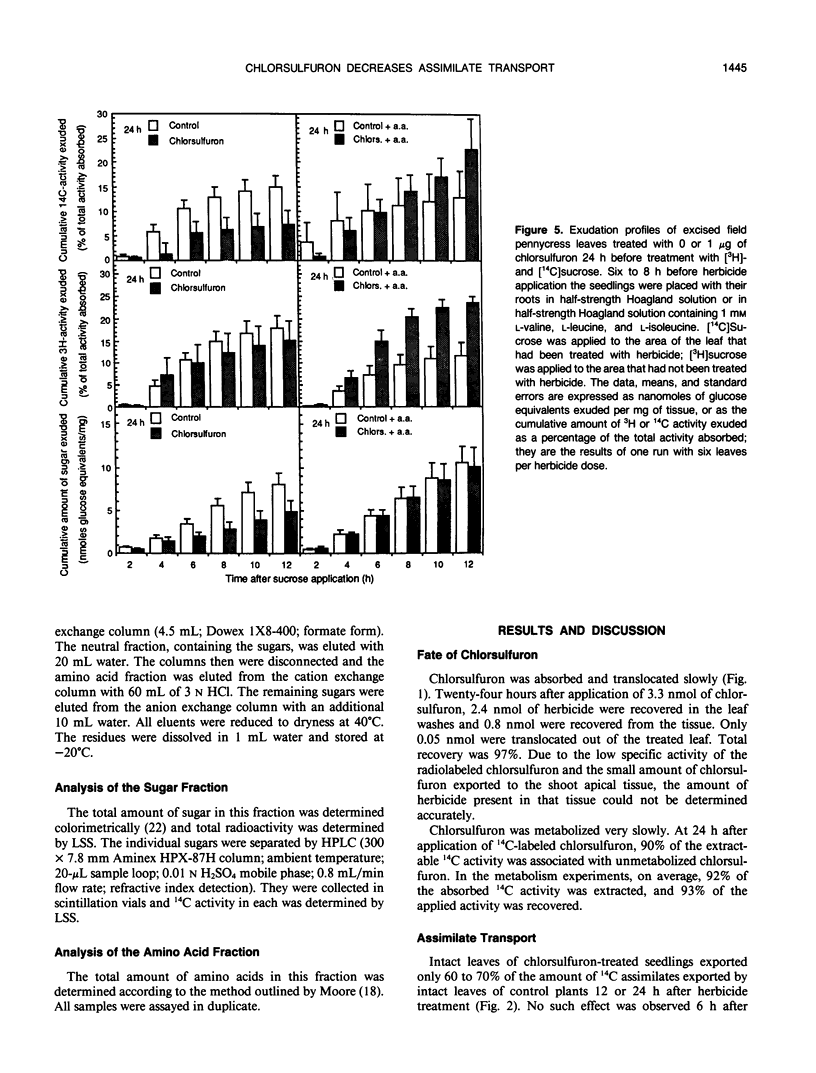
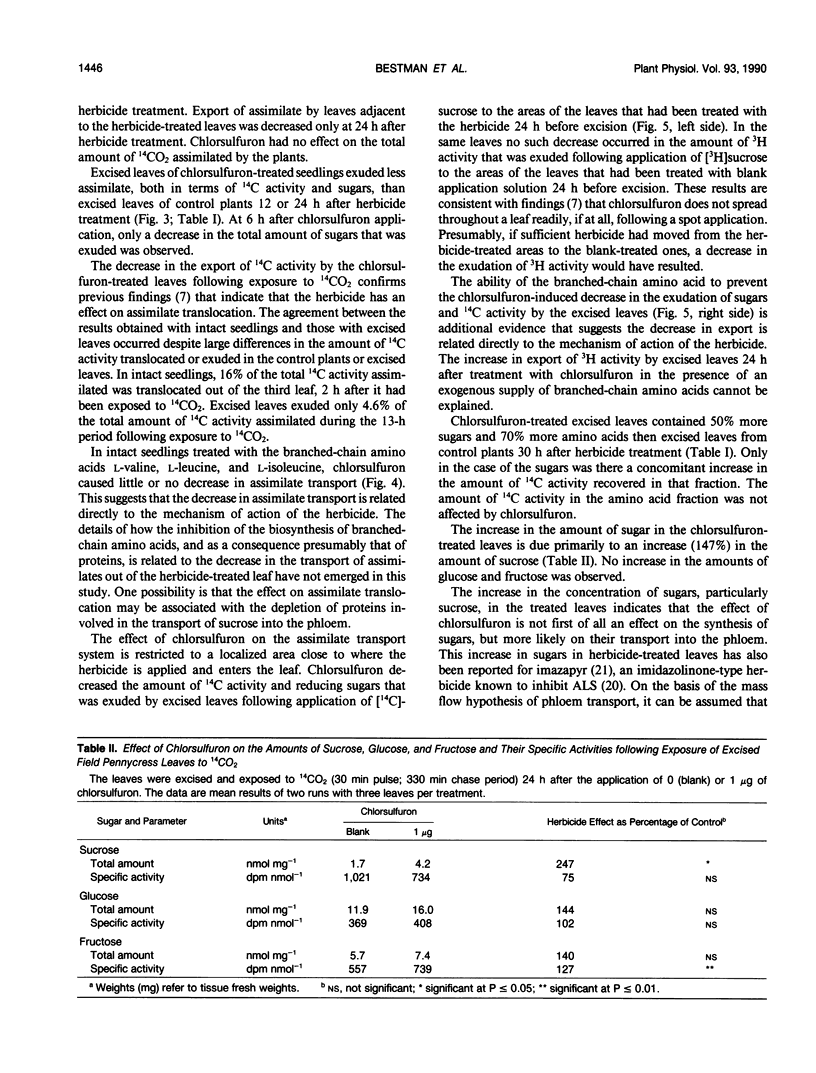
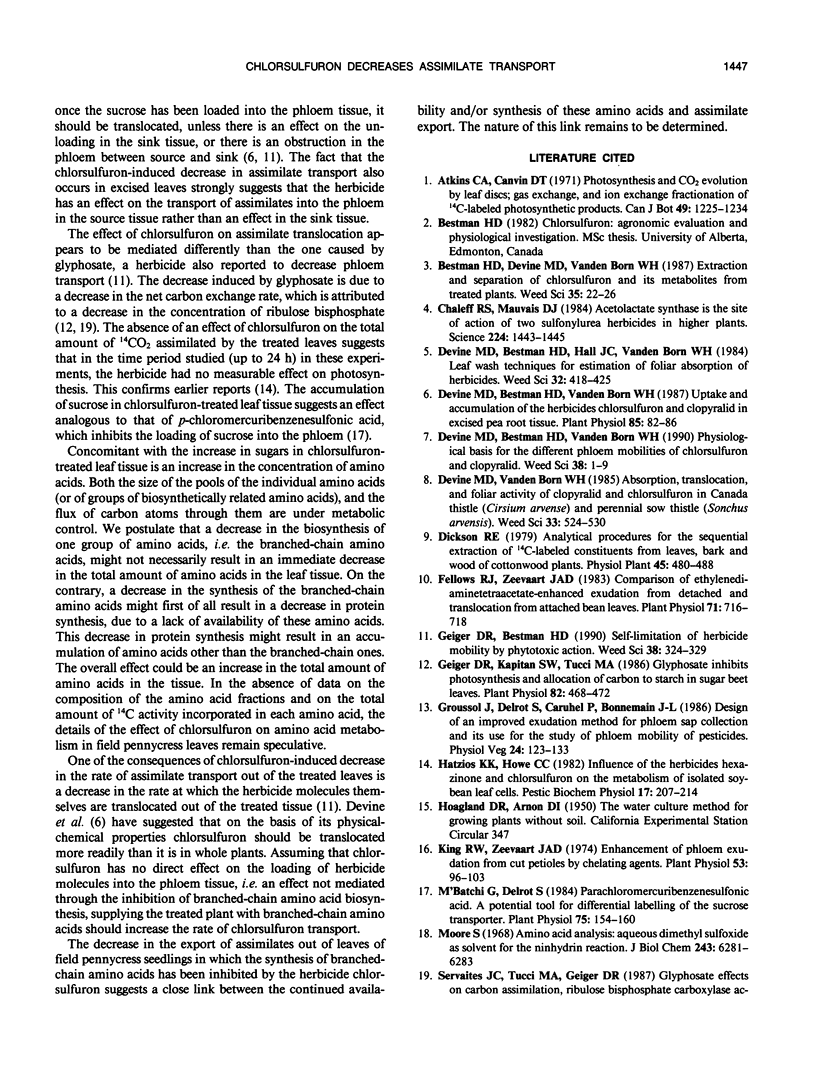
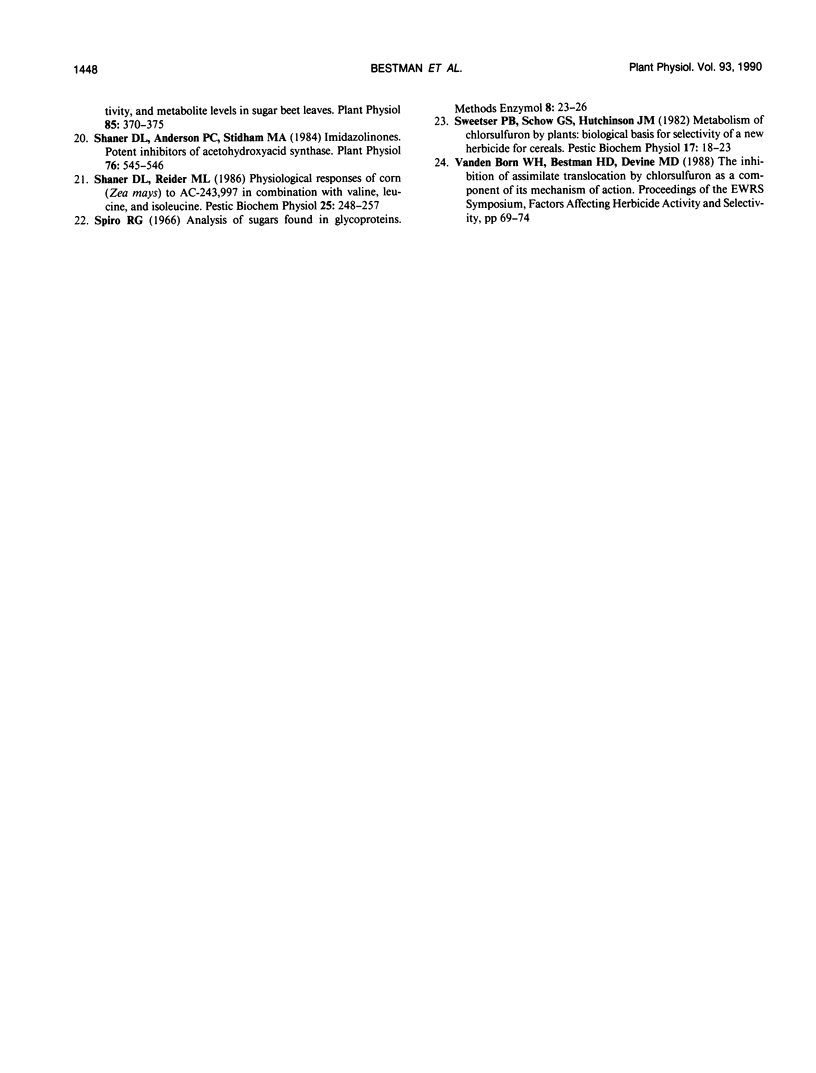
Images in this article
Selected References
These references are in PubMed. This may not be the complete list of references from this article.
- Chaleff R. S., Mauvais C. J. Acetolactate synthase is the site of action of two sulfonylurea herbicides in higher plants. Science. 1984 Jun 29;224(4656):1443–1445. doi: 10.1126/science.224.4656.1443. [DOI] [PubMed] [Google Scholar]
- Devine M. D., Bestman H. D., Vanden Born W. H. Uptake and accumulation of the herbicides chlorsulfuron and clopyralid in excised pea root tissue. Plant Physiol. 1987 Sep;85(1):82–86. doi: 10.1104/pp.85.1.82. [DOI] [PMC free article] [PubMed] [Google Scholar]
- Fellows R. J., Zeevaart J. A. Comparison of ethylenediaminetetraacetate-enhanced exudation from detached and translocation from attached bean leaves. Plant Physiol. 1983 Apr;71(4):716–718. doi: 10.1104/pp.71.4.716. [DOI] [PMC free article] [PubMed] [Google Scholar]
- Geiger D. R., Kapitan S. W., Tucci M. A. Glyphosate inhibits photosynthesis and allocation of carbon to starch in sugar beet leaves. Plant Physiol. 1986 Oct;82(2):468–472. doi: 10.1104/pp.82.2.468. [DOI] [PMC free article] [PubMed] [Google Scholar]
- King R. W., Zeevaart J. A. Enhancement of Phloem exudation from cut petioles by chelating agents. Plant Physiol. 1974 Jan;53(1):96–103. doi: 10.1104/pp.53.1.96. [DOI] [PMC free article] [PubMed] [Google Scholar]
- M'batchi B., Delrot S. Parachloromercuribenzenesulfonic Acid : a potential tool for differential labeling of the sucrose transporter. Plant Physiol. 1984 May;75(1):154–160. doi: 10.1104/pp.75.1.154. [DOI] [PMC free article] [PubMed] [Google Scholar]
- Moore S. Amino acid analysis: aqueous dimethyl sulfoxide as solvent for the ninhydrin reaction. J Biol Chem. 1968 Dec 10;243(23):6281–6283. [PubMed] [Google Scholar]
- Servaites J. C., Tucci M. A., Geiger D. R. Glyphosate effects on carbon assimilation, ribulose bisphosphate carboxylase activity, and metabolite levels in sugar beet leaves. Plant Physiol. 1987 Oct;85(2):370–374. doi: 10.1104/pp.85.2.370. [DOI] [PMC free article] [PubMed] [Google Scholar]
- Shaner D. L., Anderson P. C., Stidham M. A. Imidazolinones: potent inhibitors of acetohydroxyacid synthase. Plant Physiol. 1984 Oct;76(2):545–546. doi: 10.1104/pp.76.2.545. [DOI] [PMC free article] [PubMed] [Google Scholar]



